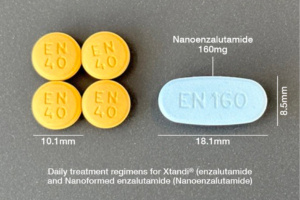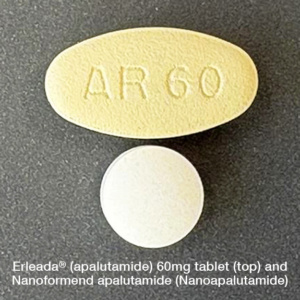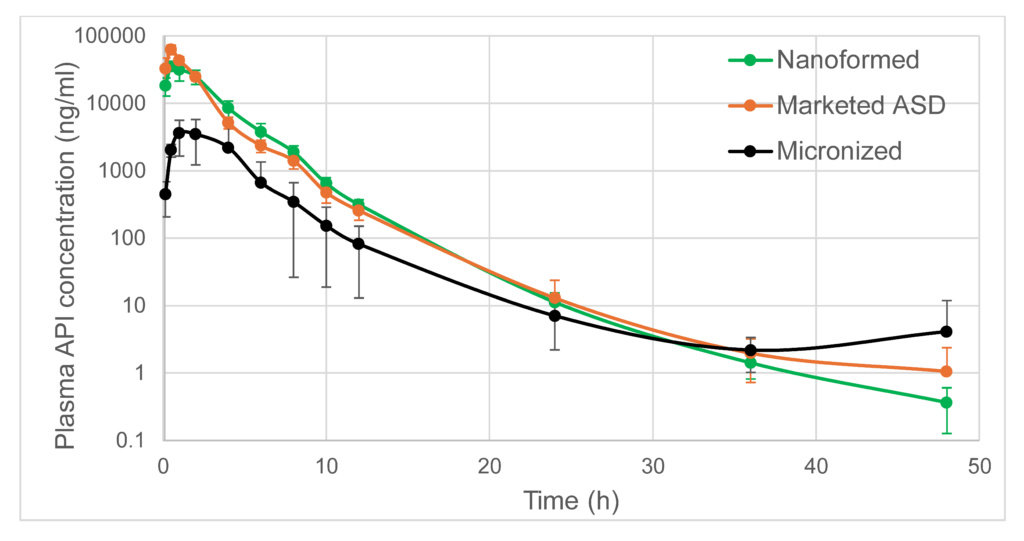- The increased complexity of many novel small molecules requires innovative drug delivery methodologies to enhance bioavailability.
Many of the latest generation of small molecule drugs in development exhibit increased molecular weights and lipophilicity. Today’s novel, complex molecules present not only biopharmaceutical challenges such as poor solubility and bioavailability, but also handling and manufacturing challenges. Over 70% of new chemical entities in drug development pipelines are not readily bioavailable when administered orally: they are therefore less likely to achieve sufficient exposure (efficacy) and are likely to exhibit higher variability and/or food effects: By design, Nanoform’s enabling technology addresses these issues.


The increased specific surface area of nanoparticles leads to faster dissolution rates and improved apparent solubility, leading to higher in vivo exposure of poorly soluble compounds. Nanoparticles significantly outperform micronized formulations and match or exceed the pharmacokinetic profile of other advanced formulations, including amorphous solid dispersions (ASDs), and the potential for increased drug load. The below case study shows a poorly soluble drug with the marketed benchmark formulated using an amorphous solid dispersion (ASD). The nanoformed formulation was statistically identical to the marketed ASD formulation, and strongly outperformed a formulation featuring micronized API. The nanoformed formulation possessed extremely high drug loading compared to the marketed ASD’s low drug load, translating to a smaller solid dosage form and to lower overall pill burden.

| Formulation | AUC0–inf (h∙ng/ml) | Fabs | Frel, ASD |
|---|---|---|---|
| Nanoformed | 107,517* | 68.2% | 90.7% |
| Marketed ASD | 118,000* | 75.2% | 100.0% |
| Micronized | 15,643 | 9.9% | 13.2% |
*t-test p>0.3
As the exposure pharmacokinetic parameters above show, the nanoformed API has statistically equivalent exposure to the marketed ASD and a seven-fold improvement over the micronized API dosed in the same vehicle, enabling dosing regimens of lower pill burden that are more patient centric, and potentially improving adherence.